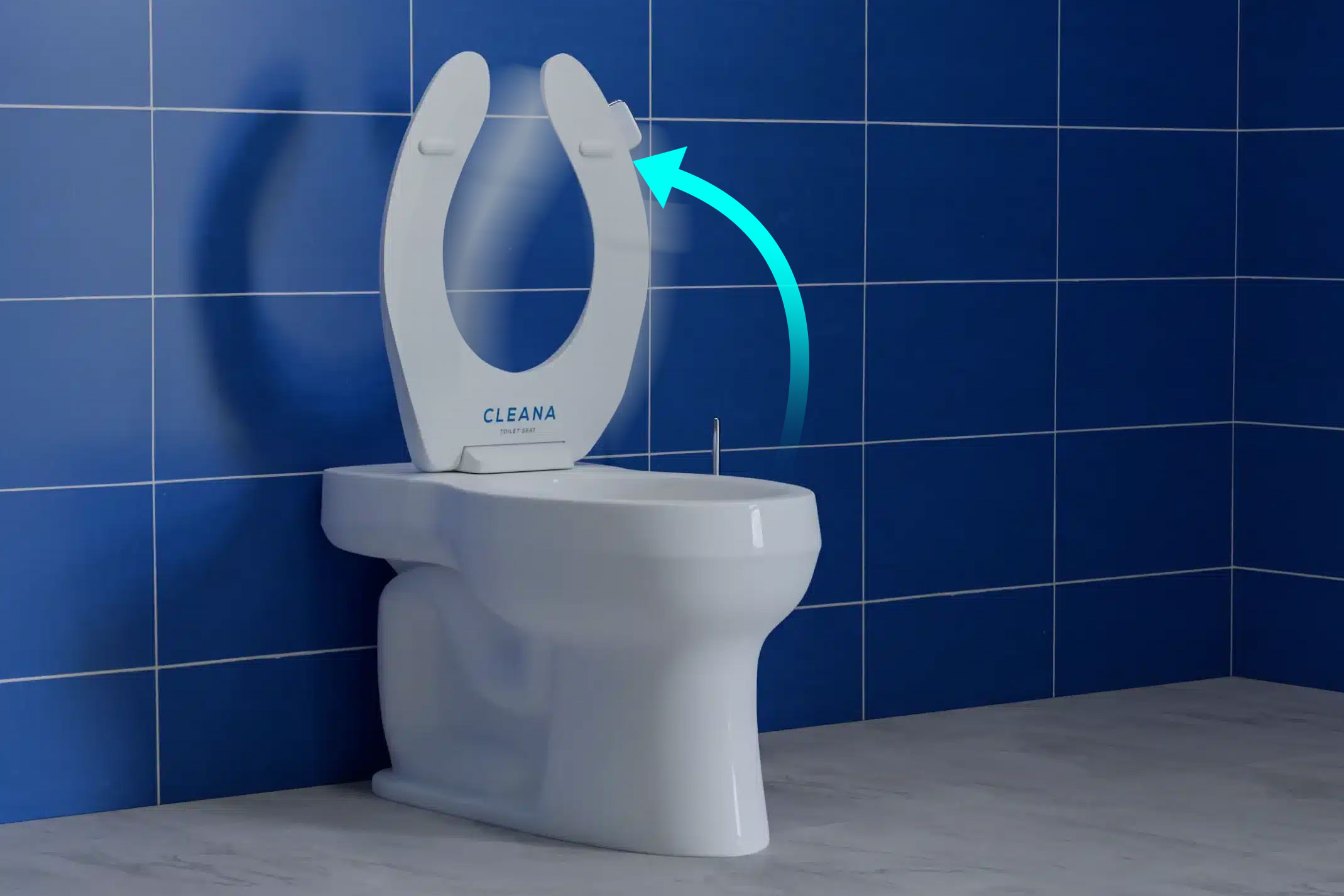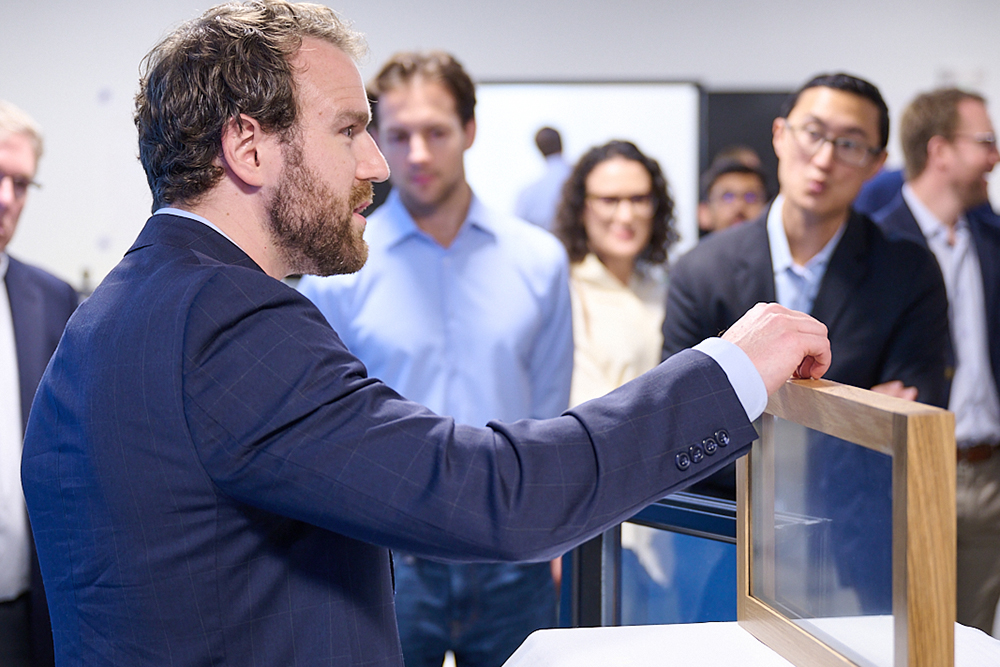Experiencing a messy toilet seat is an unpleasant reality we’ve all faced. However, an innovative startup founded by MIT alumni, Cleana, is on a mission to eliminate this issue once and for all.
Cleana’s co-founder, Richard Li SM ’24, has engineered an antibacterial, self-lifting toilet seat designed to enhance hygiene and elevate bathroom standards. Though developing a new toilet seat might not sound as glamorous as building a fusion reactor, Li firmly believes in the significance of their endeavor.
“People often find it unusual at first — many of our investors did too,” Li remarks. “Yet, this project embodies my dedication during my four years at MIT, and we’ve created the best solution for a prevalent problem.”
To date, Cleana has installed approximately 1,000 of its smart toilet seats in diverse locations including schools, airports, gyms, and stadiums. Notable clients include Gillette Stadium, the YMCA, and even MIT itself, which has procured multiple self-lifting toilet seats for its facilities.
“Anyone who has confronted a dirty toilet seat understands the magnitude of this issue,” Li points out. “It’s a common frustration, yet no one has tackled it effectively or elegantly.”
The inspiration for Cleana emerged during the Covid-19 pandemic when clean hygiene was more crucial than ever. While pursuing his master’s in Mechanical Engineering at MIT in 2020, Li teamed up with co-founders Kevin Tang, Max Pounanov, and Andy Chang—students from Boston University—to bring autonomy to the restroom experience. The first prototypes were created in MIT’s Sidney-Pacific dormitory and D-Lab, utilizing hand tools, heavy machinery, and 3D printing technology to experiment with different designs.
The journey wasn’t without challenges; the founders dedicated countless nights to researching restrooms across Boston, dismantling numerous toilet seats to ensure their product fit various dimensions. In a remarkable feat of market research, they even stationed themselves outside a local bowling alley restroom, interviewing users about their experiences with the newly installed Cleana units.
The reactions, while perhaps uncomfortable at times, revealed encouraging insights: users consistently reported that Cleana’s toilet seats felt significantly cleaner and drier compared to traditional options. A comprehensive study indicated that Cleana’s seats reduced nearly 95% of common messes in bathrooms where they were implemented.
“The experience may not have been pleasant, but we acquired the data we needed,” Li chuckles.
On the surface, Cleana’s smart seat resembles a conventional toilet seat, albeit with a specialized handle. Yet, the engineering behind it is far more intricate than it appears. Implementing a simple spring mechanism to lift the seat was dismissed as it could lead to issues during use. After three significant design iterations, the team arrived at the current model.
This innovative seat operates without batteries or electronics, raising mechanically after a set period, removing it from the areas commonly affected by messes. It discreetly detects when someone is seated and intelligently decides the optimal moment to lift itself.
Cleana’s design particularly excels in public men’s and all-gender restrooms, where careless usage often leads to messes. Additionally, the seats are embedded with antimicrobial properties to fend off germ transmission, and the unique handle allows users to lift the seat without direct contact.
Feedback from users has highlighted a noticeable decrease in toilet seat messes and a reduction in maintenance demands post-implementation.
“Our product significantly lightens the workload for cleaning staff,” Li explains. “Many facilities previously had to send cleaning crews into restrooms multiple times a day just to check the seat’s cleanliness. Now, they find it’s already clean every time they inspect.”
The company is also developing a premium home version that automatically lowers both the toilet seat and lid, utilizing the same technology as the commercial model. This product aims to resolve the longstanding debate over who should lower the toilet seat while ensuring young children, pets, and untethered items are kept safe from open bowls.
“It’s amusing that our second product is essentially the reverse of the first, but interest has exceeded our expectations, particularly among homeowners and developers,” Li notes. Major plumbing companies have conducted independent surveys, revealing that over half of consumers might consider adopting this product in the near future.
Ultimately, Li envisions a world where he can confidently visit any public restroom and find Cleana’s smart seat waiting for him. Fortunately, this dream manifested on a recent trip to Roche Brothers in Watertown, Massachusetts, when he serendipitously found his creation in the restroom there.
However, Li acknowledges that Cleana’s journey is far from over. This past spring, during his graduation ceremony at MIT, he proudly donned a toilet seat in place of a sash.
Despite the stares, he knew his creation was clean.
Photo credit & article inspired by: Massachusetts Institute of Technology



